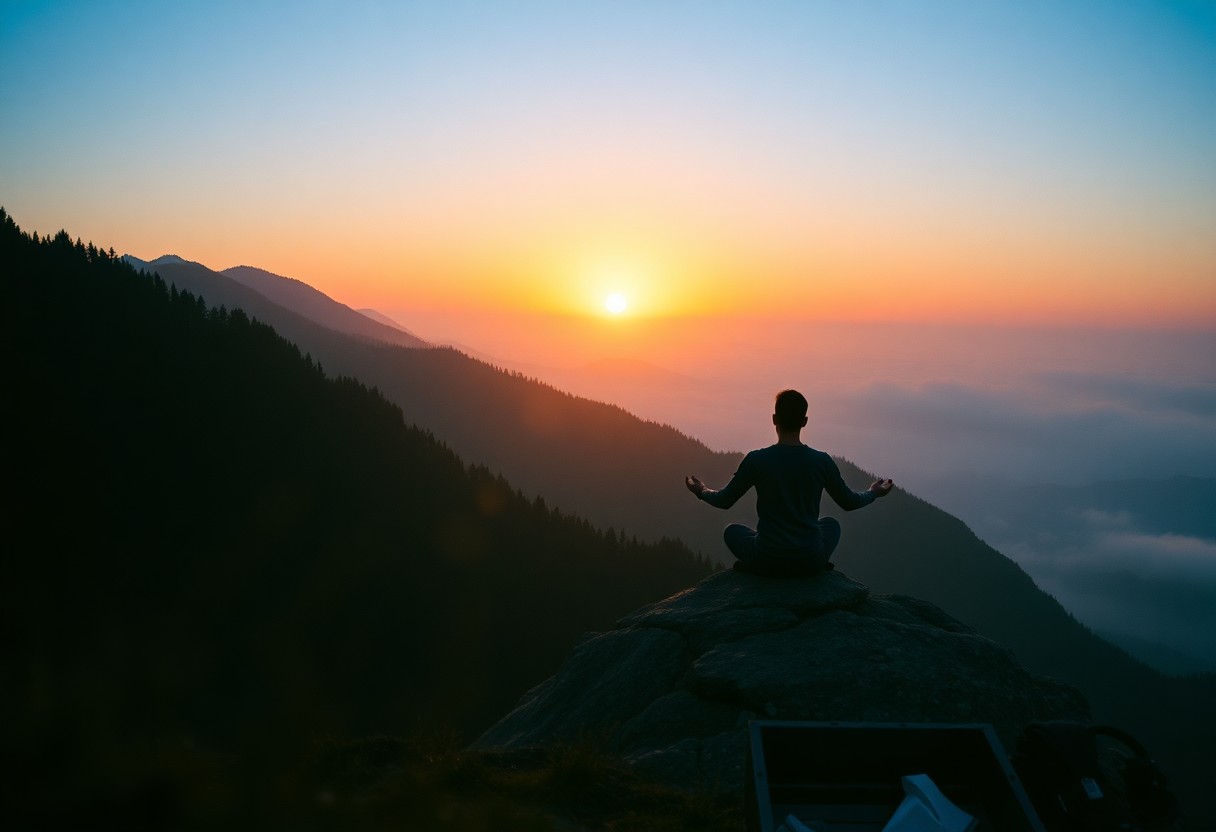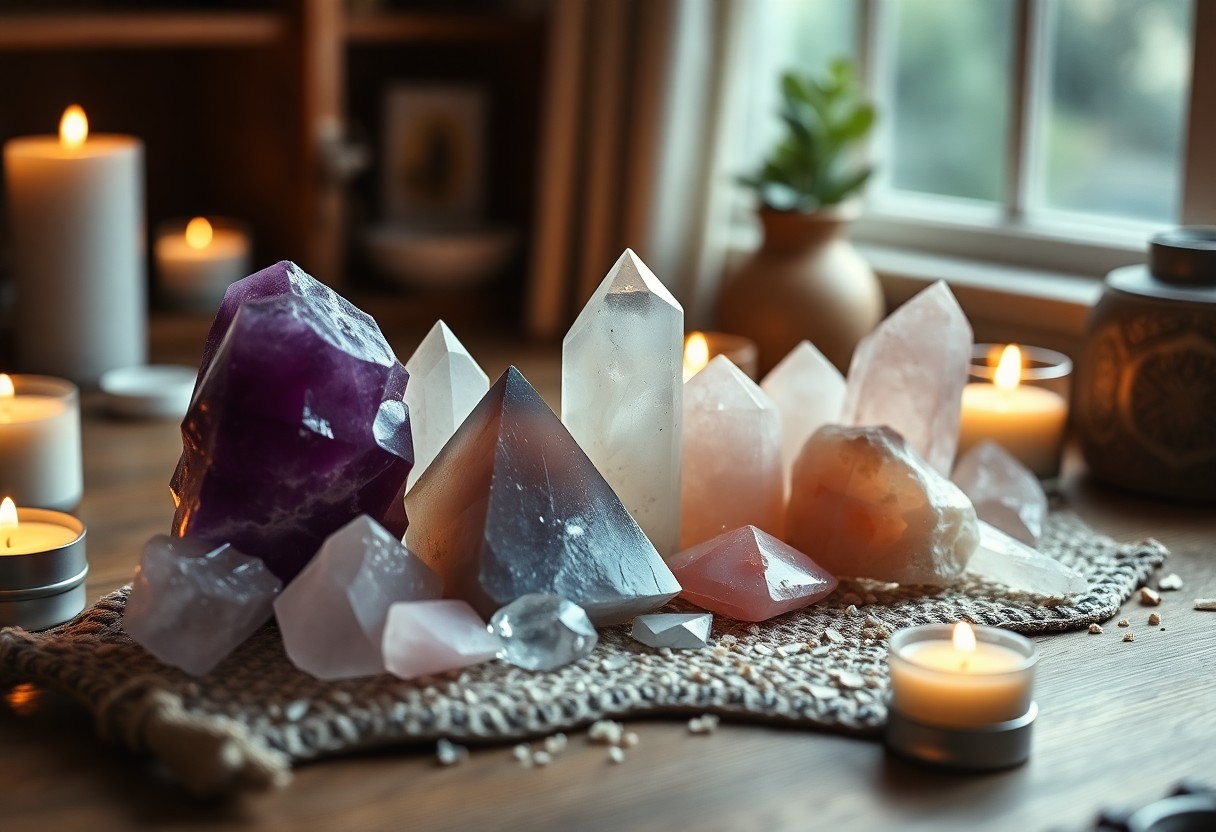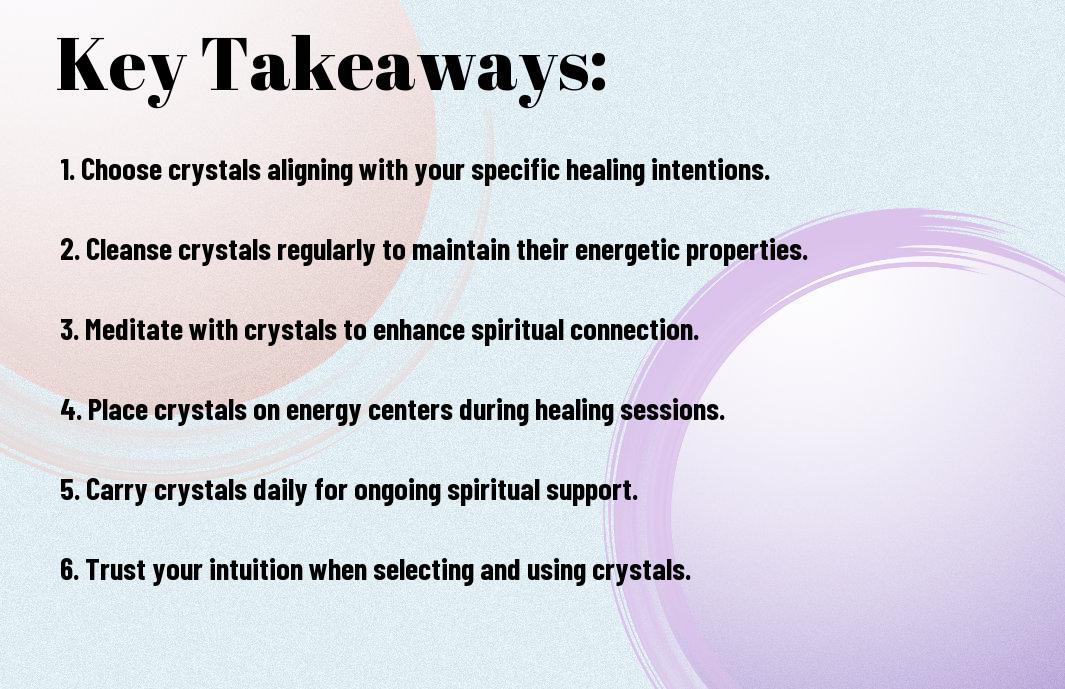Overcome spiritual burnout by recognizing the signs and taking proactive steps to restore your inner peace. It’s common to feel detached or exhausted in your spiritual practice, but addressing these feelings effectively can bring you back to a place of fulfillment and connection. In this guide, you will discover practical strategies to rejuvenate your spirit, find balance in your routine, and nurture your well-being, all while fostering a deeper understanding of your journey. Embrace these insights to revitalize your spiritual life and sustain your energy for the road ahead.
Key Takeaways:
- Recognize the signs of spiritual burnout to address the issue early.
- Prioritize self-care practices that nourish your spirit and well-being.
- Engage in meaningful reflection to reconnect with your purpose and values.
- Establish healthy boundaries to protect your energy and emotional health.
- Seek support from community or mentors to share experiences and gain perspective.
Understanding Spiritual Burnout
Your spiritual journey is meant to be enriching and fulfilling, but sometimes it can lead to feelings of exhaustion and detachment. Spiritual burnout occurs when you feel depleted, as if your inner light is dimming. Recognizing this state is the first step toward reclaiming your vitality and deepening your spiritual practice.
Defining Spiritual Burnout
Between constant demands of life and a lack of personal reflection, you may find yourself mentally and emotionally drained. Spiritual burnout is characterized by a sense of disconnection from your beliefs, values, and practices. It’s a state where spiritual activities feel more like chores, leading to disengagement from what once inspired you.
Causes and Symptoms
To understand the underlying issues of spiritual burnout, it’s important to recognize its causes and symptoms. This often arises from overwhelming obligations, unrealistic expectations, and neglecting self-care. Symptoms include feelings of stagnation, loss of motivation, and a sense of isolation from your spiritual community or practices.
This state of emotional and spiritual fatigue can leave you feeling unfulfilled and questioning your path. You may notice persistent feelings of frustration or disappointment, difficulty in maintaining your spiritual practices, or a sense of bleakness about the future. Recognizing these signs can help you take the necessary steps to address the root issues and restore balance in your spiritual life.

Recognizing the Signs
Any form of spiritual burnout can leave you feeling detached and disillusioned. It’s vital to acknowledge these feelings early on to prevent further disconnection from your spiritual practice. You may notice a reduced sense of purpose, a lack of enthusiasm for activities that once inspired you, or a general feeling of emptiness. By recognizing these signs, you can take proactive steps to restore your spiritual well-being.
Emotional Indicators
Emotional signs of spiritual burnout often manifest as prolonged feelings of sadness, irritability, or frustration. You may find yourself frequently questioning your beliefs or feeling a sense of spiritual void. This emotional turmoil can distort your sense of inner peace, leaving you longing for a deeper connection that seems just out of reach.
Physical Symptoms
Signs of spiritual burnout can also appear in your body. You might experience fatigue, insomnia, or frequent headaches, all of which can disrupt your daily life. These physical symptoms are not merely coincidental; they often reflect the toll that emotional and spiritual distress can take on your overall health.
This disconnection between mind, body, and spirit can lead to feelings of lethargy and a lack of vitality. Over time, your body may react to the emotional strain, leading to symptoms like muscle tension or digestive issues. Acknowledging these physical signals is important for reclaiming your health and restoring your spiritual balance.
The Importance of Self-Care
To effectively overcome spiritual burnout, prioritizing self-care is important. This means dedicating time to your physical, mental, and emotional well-being, allowing you to reconnect with your inner self. Engaging in self-care activities fosters resilience and provides space for growth and healing, enabling you to refocus your spiritual journey with renewed energy and clarity. By nurturing yourself, you build a strong foundation that supports your spiritual pursuits.
Mindfulness Practices
About mindfulness practices, they offer valuable tools for grounding and centering yourself during times of spiritual fatigue. Techniques such as meditation, deep breathing, and journaling allow you to create a sacred space within your mind, helping you to cultivate awareness and presence. By incorporating these practices into your daily routine, you can enhance your ability to navigate stress and foster a deeper connection with your spiritual self.
Rest and Restoration
Along with mindfulness, finding rest and restoration is vital to combat spiritual burnout. Allowing yourself time to recharge physically and emotionally helps restore the balance needed for spiritual growth.
This can include engaging in activities that rejuvenate your spirit, such as spending time in nature, practicing yoga, or enjoying creative pursuits. It’s important to listen to your body and mind, granting yourself permission to take breaks without guilt. Prioritizing adequate sleep and downtime aids in achieving a harmonious state, enabling you to return to your spiritual practices with newfound vigor and insight.
Reconnecting with Your Faith
Keep an open heart and mind as you begin on the journey to reconnect with your faith. This process can involve revisiting the core beliefs that once resonated with you and understanding how they align with your current values. Take the time to engage with religious texts, prayer, or meditation, allowing these practices to nurture your spirit. Embrace the opportunity to explore what faith means to you now, and let that understanding guide you toward a more fulfilling spiritual experience.
Revisiting Spiritual Practices
About revisiting spiritual practices means refreshing the activities that once nourished your spirit. Consider incorporating meditation, prayer, or mindfulness exercises back into your routine. Allocate specific times in your day to pause and reflect, helping you to create a deeper connection to your beliefs. Consistently engaging in these practices can foster a sense of peace and enhance your overall spiritual well-being.
Seeking Community Support
Across various faith traditions, community plays an crucial role in maintaining spiritual health. Being surrounded by like-minded individuals can provide you with encouragement and shared experiences that enrich your spiritual journey. Engaging in community gatherings, workshops, or support groups fosters a sense of belonging, allowing you to discuss your struggles and triumphs openly.
Another effective way to seek community support is by reaching out to others who share similar beliefs or struggles. Join local faith groups, online forums, or attend workshops that resonate with your spiritual interests. Building connections with others can provide both accountability and comfort as you navigate your path to overcome burnout. By sharing your experiences and wisdom, you not only empower yourself but also contribute positively to your community’s spiritual growth.
Setting Healthy Boundaries
All individuals need boundaries to maintain their spiritual health. By establishing clear limits, you can create a safe space for your personal growth and rejuvenation. This allows you to engage with your spiritual practices without feeling overwhelmed or depleted. Healthy boundaries empower you to prioritize your needs while fostering stronger connections with others.
Understanding Limits
The key to overcoming spiritual burnout lies in recognizing your limits. Understanding what you can handle emotionally, mentally, and spiritually enables you to allocate your energy effectively. Acknowledging these boundaries helps you to differentiate between what is beneficial for your growth and what may drain you, ensuring a more balanced spiritual journey.
Prioritizing Personal Time
Limits are vital in prioritizing personal time for self-care. Allocating specific periods for yourself allows you to recharge and connect with your inner self. By carving out this time, you fortify your spiritual foundation, enabling you to serve others authentically without feeling exhausted.
Setting aside personal time is not just an indulgence; it is a necessity for your well-being. Designate moments each week where you engage in activities that nourish your spirit. This could involve quiet reflection, meditation, or enjoying nature—whatever resonates with you. Prioritizing these interactions helps rejuvenate your soul and keeps you anchored, ultimately enhancing your capacity to support those around you.
Seeking Professional Help
Once again, it’s vital to recognize that spiritual burnout can be overwhelming, and seeking professional help can provide you with the necessary support to navigate this challenging time. Trained professionals can offer guidance, helping you explore your feelings and find constructive ways to reconnect with your spirituality and overall well-being.
When to Reach Out
Reach out for support if you find yourself feeling disconnected from your beliefs, overwhelmed with feelings of doubt, or experiencing persistent emotional distress. It’s important to address these feelings before they escalate, enabling you to find clarity and peace in your spiritual journey.
Types of Support Available
An array of support options exists for those struggling with spiritual burnout. Consider these resources:
- Spiritual counselors who specialize in guiding individuals through spiritual dilemmas.
- Therapists with experience in spiritual or existential issues.
- Support groups that foster community and share experiences.
- Workshops focusing on mindfulness and spirituality.
- Online forums and resources for remote support.
The right support can greatly enhance your journey through recovery.
| Type of Support | Description |
|---|---|
| Spiritual Counselors | Professionals who provide personalized guidance through spiritual struggles. |
| Therapists | Licensed individuals focused on emotional and spiritual wellness. |
| Support Groups | Gatherings for shared experiences and mutual encouragement. |
| Workshops | Educational sessions that promote mindfulness and spiritual growth. |
| Online Forums | Virtual communities where you can connect with others facing similar challenges. |
Further exploring these options can be profoundly beneficial. Each type of support offers its unique advantages and can help you uncover your path to healing. By engaging with these services, you may find new insights and strategies for overcoming spiritual burnout.
- Engaging with spiritual workshops can help rebuild your connection to your beliefs.
- Support groups offer solidarity and shared experiences to alleviate feelings of isolation.
- Online forums provide anonymity and comfort to express your feelings freely.
- Therapists can guide you through your emotions in a safe environment.
- Spiritual counselors can assist in deepening your understanding and connection to your faith.
The beneficial effects of professional help can significantly enhance your spiritual journey and well-being.
| Benefits of Support | Impact on You |
|---|---|
| Presents fresh perspectives | Encourages deeper understanding of your feelings. |
| Provides tools for coping | Equips you with strategies for resilience. |
| Enhances community belonging | Reduces feelings of isolation and loneliness. |
| Encourages healing | Facilitates the journey back to spiritual connection. |
| Fosters personal growth | Supports you in evolving your spiritual beliefs. |
Summing up
Now, to overcome spiritual burnout, it’s vital for you to prioritize self-care, establish healthy boundaries, and seek supportive communities. Engage in practices that rejuvenate your spirit, such as meditation, nature walks, or creative expression. Reflect on your values and reassess your commitments to ensure they align with your true self. Allow yourself the grace to step back and recharge; this will renew your connection to your spiritual journey. Embrace this process as a valuable opportunity for growth and deeper understanding of yourself.
Q: What are some signs that I may be experiencing spiritual burnout?
A: Spiritual burnout can manifest in various ways. Common signs include feelings of disconnection from your spiritual practice, fatigue or exhaustion related to spiritual activities, a lack of motivation to engage in spiritual community or rituals, and feelings of cynicism or doubt about your beliefs. Additionally, you may notice increased irritability or a sense of emptiness even after participating in activities that once brought you joy and fulfillment.
Q: How can I effectively recharge my spiritual energy when facing burnout?
A: To recharge your spiritual energy, consider incorporating practices that nurture your spirit in a relaxed and gentle way. These may include spending time in nature, practicing mindfulness or meditation, or exploring new spiritual practices that inspire you. Engaging in creative outlets, such as art or writing, can also facilitate connection to your inner self. Prioritize self-care and allow yourself to take a break from routine spiritual obligations, giving yourself permission to reconnect with your beliefs on a pace that feels right for you.
Q: Is it beneficial to seek support from others when dealing with spiritual burnout?
A: Yes, seeking support from others can be quite beneficial during times of spiritual burnout. Sharing your feelings with trusted friends, family members, or spiritual leaders can provide valuable perspectives and encouragement. Participating in support groups or communities that align with your beliefs may also help you feel connected and understood. Engaging in conversation with those who have overcome similar experiences can offer comfort and new strategies for maintaining your spiritual health.




